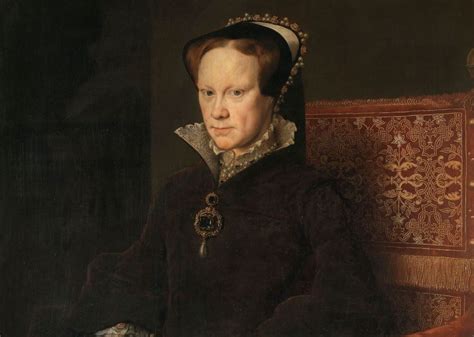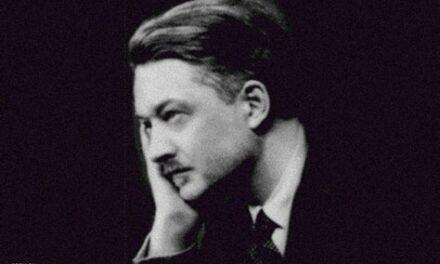In spite of the efforts of several biographers over the past seven years, the rehabilitation of Mary I’s reputation seems impossible. The burning bodies of 280 English men and women haunt her legacy — and the memory of Catholicism in England.
Historians such Linda Porter, Anna Whitelock, Judith Richards, Susan Doran and Thomas S. Freeman, and John Edwards have pointed out that Mary, Henry VIII, and Catherine of Aragon’s daughter forged the path that her half-sister, Elizabeth, would follow. Mary I was the first queen regnant of England; her anointing and crowning broke the taboo of those semi-sacraments being reserved for men; she and Reginald Cardinal Pole, the last Catholic Archbishop of Canterbury, revived and renewed the practice of Catholicism in England; and she possessed the Tudor charisma while being a hard-working and thoughtful monarch.
But for all of Mary I’s historic attainments, the smoke from the pyres of Smithfield still gets in our eyes.
When Anna Whitelock, author of Mary Tudor: Princess, Bastard, Queen (Random House: 2010) stated in the BBC History Magazine (Christmas 2014) that the campaign to extirpate heresy in England was working, one reader’s response in January 2015 was immediately negative—the heresy campaign was evil, even if it was effective. Eamon Duffy made the same statement in his study The Fires of Faith: Catholic England under Mary Tudor in 2010, arguing that the negative campaign of heresy trials and executions was matched by a positive campaign of preaching, publishing, and rebuilding—and he met with the same response from reviewers like Hilary Mantel and Richard Wilkinson.
The 2lst century biographers follow the lead of H.F.M. Prescott’s 1953 Mary Tudor: The Spanish Tudor to present Mary’s great qualities of generosity, love of children, faithfulness to her religion, dedication to her mother, and adoration of her father, and how horrible her adolescence and early adulthood were; not allowed to see her dying mother, forced by her adored father to swear to her own bastardy, prevented from the normal course of marriage and childbearing.
She remains resolute against Edward VI’s orders to give up the Mass; she defeats John Dudley’s attempt to place his daughter-in-law, Lady Jane Grey, on the throne; she rallies the people of The City of London against Thomas Wyatt’s rebellion; she is abandoned by her husband, Philip, and cannot bear the heir that will consolidate Catholicism in England.
But whatever sympathy she earns from the reader is repeatedly undercut by the images from John Foxe’s 1563 influential Acts and Monuments/Book of Martyrs. Foxe’s book contains an exhaustive account of the Protestant martyrs, such the two ministers, Hugh Latimer and Nicolas Ridley: “Be of good comfort, Master Ridley, and play the man! We shall this day light such a candle, by God’s grace, in England, as I trust shall never be put out.” All attempts of biographers to offer an alternative understanding of “Bloody Mary” have not been able to overcome retelling of such tales over the centuries.
In Herbert Butterfield’s The Whig Interpretation of History, the Methodist Regius Professor of History at the University of Cambridge, urges to understand the historical milieu and not impose our modern morality on the past. Butterfield tells us that Mary I’s era was “a time when any serious error concerning divine things as almost universally regarded as blasphemy,” and that “state and the secular rulers could not imagine that religious non-conformity might be consistent with public order.”
Elizabeth I would condemn almost as many to death for their Catholic faith but called it treason, not heresy.
Nevertheless, whatever revisions we may make to the history of the English Reformation in rejecting the Whig tendency to find modern virtues and condemn old vices, it’s difficult, perhaps impossible, to save the reputation of Mary I from charges of cruelty and fanaticism.















Finally, this article gives hope to make an informed assessment of Mary’s character, and to understand the historical context in which she lived and reigned.
William Cobbett in 1820, said it should be Bloody Bess, not Mary